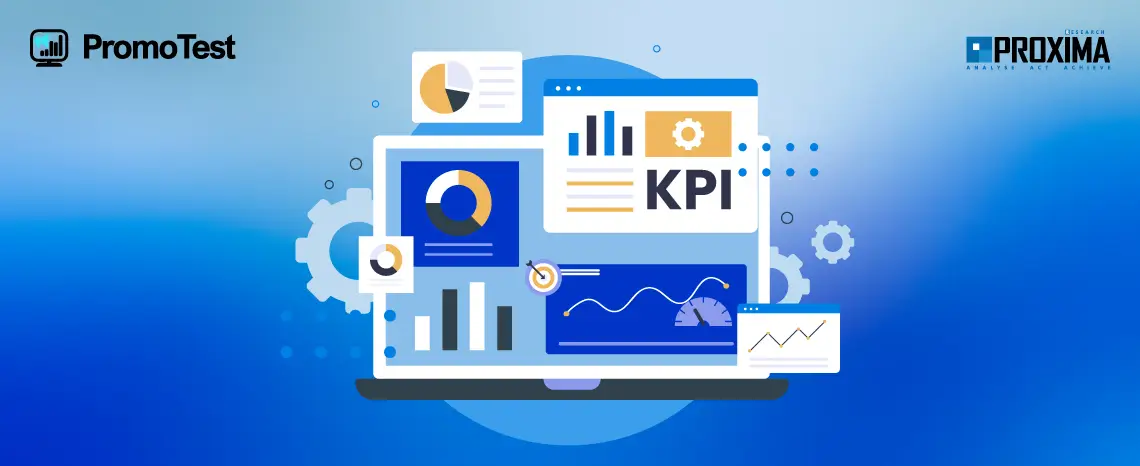28.10.2025

Medical representatives play a key role in achieving the business objectives of pharmaceutical companies. They serve as an important source of professional information for healthcare specialists, build brand trust through high-quality communication and expertise, and provide support on all additional matters related to medicines and their use.
Evaluation of medical representatives’ promotional effectiveness can be based on various indicators. The main ones typically include the growth of pharmacy sales and internal performance reports. However, the availability of analytical tools that allow analysing the dynamics of doctors’ mentions of prescriptions (or actual prescriptions), pharmacists’ recommendations, and tracking sales growth in specific territories takes this process to a new level. It enhances accuracy, objectivity, and flexibility in identifying issues, helps optimize resources, and achieve better outcomes.
The corresponding analytical toolkit is available in the BI solutions provided by Proxima Research International.
Undoubtedly, sales remain the cornerstone in evaluating external service effectiveness. However, to gain a more complete picture of performance, it is advisable to use several KPIs.
Since promotional activities usually contribute to doctors’ prescriptions and pharmacists’ recommendations, an important metric is the number of mentions of healthcare professionals (doctors, pharmacists, procurement experts) about the promotion of a particular company’s brand, as well as recollections of prescriptions. This indicator can be tracked using the PromoTest tool (Fig. 1, 2).
Fig. 1. Dynamics of promotional activity in Kazakhstan, Jan 2021 – Jul 2025
Fig. 2. PromoTest metrics
Using PromoTest, companies can assess visit effectiveness (whether healthcare professionals remember them), segment their audience, and determine prescription potential. Dynamic data allows tracking external service performance on a monthly basis, and by calculating the conversion rate, it is possible to assess how promotional efforts turn into prescriptions.
Since 2025, these analytical products have become available not only in QlikView but also in Power BI, which expands analytical possibilities thanks to more flexible visualizations and faster data processing.
The analysis of doctors’ and pharmacists’ promotions is presented in PromoTest reports on Power BI.
RxTest enables monitoring of actual prescriptions. This tool helps segment the target audience, build promotional strategies and tactics considering specializations, create patient profiles, and assess the competitive environment (Fig. 3).
Since 2025, the geographical coverage of PromoTest and RxTest monitoring has also been expanded.
Fig. 3. RxTest metrics
A new tool designed to help companies more accurately assess their own performance is PromoCompas. It is based on the intersection of medical representatives’ visit data from a specific company and PromoTest research samples for the selected period. This tool enables the evaluation of visit-to-prescription conversion, as well as comparative analysis of company representatives’ performance against competitors across various target audiences.
According to global McKinsey [1], BCG [2] research, an important trend that emerged during the COVID-19 pandemic and continues today is the decline of direct communication. More and more healthcare specialists prefer digital communication channels (such as video calls and online meetings) and hybrid promotion models.
This transformation also influences analytics: the focus shifts from quantitative indicators (number of interactions) to qualitative ones — engagement level and its impact. Although most promotional budgets are still allocated to direct communication, the approach is changing: it is no longer just about visits but about hybrid multichannel communication planning with healthcare professionals. Medical representatives are increasingly becoming interaction managers, combining personal communication with digital activities. Analytics, in turn, is evolving toward predictive models, allowing companies to assess and forecast the impact of promotion on prescriptions.
Fig. 4. Global promotion trends and the evolution of analytics
From the perspective of healthcare professionals, the professionalism of medical representatives is determined by several key factors:
— in-depth knowledge of drug information, including properties, mechanisms of action, advantages, contraindications, and potential interactions;
— well-developed communication skills, the ability to build constructive dialogue and find an individual approach;
— adherence to ethical standards, confidentiality principles, and professional conduct.
All these factors help build trust-based relationships and long-term cooperation, forming the foundation of sustainable loyalty.
Building KPIs based on objective data from reliable sources increases the transparency of evaluation systems, reduces stress related to performance assessment, and strengthens team trust.
One of the main KPI indicators undoubtedly remains sales. However, it is essential to remember that sales are the result of high-quality audience engagement and a well-thought-out promotional strategy and tactics. KPIs are closely linked to the company’s business goals — pharmacy sales volume, the number of healthcare professionals’ recalls of promotion/prescriptions, sales share, recall/prescription share, growth rate compared to the previous period, and more. It is extremely important to maintain continuous monitoring — this allows assessing the impact of each factor on the effectiveness of medical representatives’ performance.
Analytical tools PromoTest, RxTest, and PromoCompas by Proxima Research enable companies to build a balanced, transparent, and effective system for evaluating external service performance. These are tools for companies that strive not only to assess results but also to understand how they were achieved — and scale successful practices accordingly.
Analytics of pharmaceutical companies’ promotional activity is the key to effective external service performance. Order PromoTest by Proxima Research — a tool that transforms data into real business results.
Sources:
If the topic of the article caught your interest — leave a request. We’ll discuss how this can work for you.
By clicking the “Submit Application” button, you consent to the processing of personal data and to receiving electronic messages about Proxima Research products and services, and you agree to our Terms of Use. Your data will be processed in accordance with our Privacy Policy. You may unsubscribe at any time.
By clicking the “Subscribe” button, you consent to the processing of personal data and the receipt of electronic messages about Proxima Research products and services, and you agree to our Terms of Use. Your data will be processed in accordance with our Privacy Policy. You can unsubscribe at any time.
or